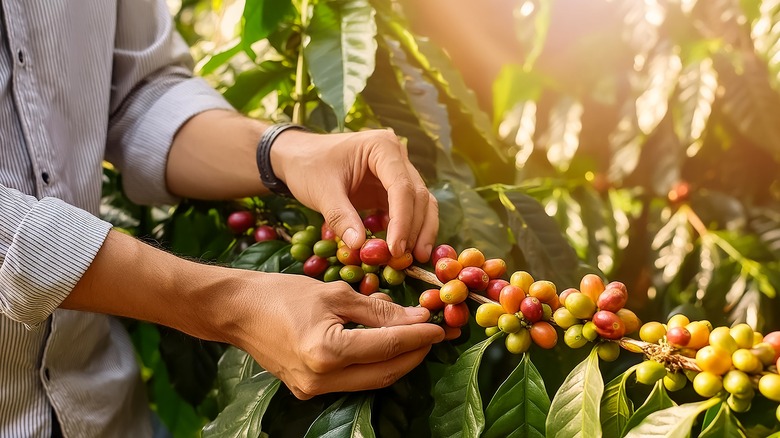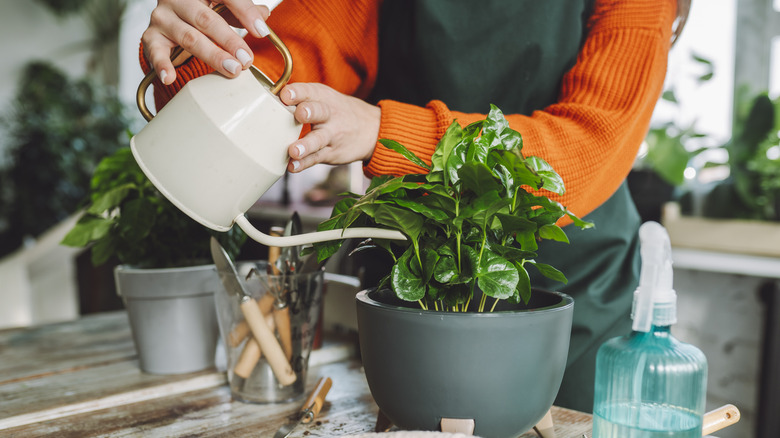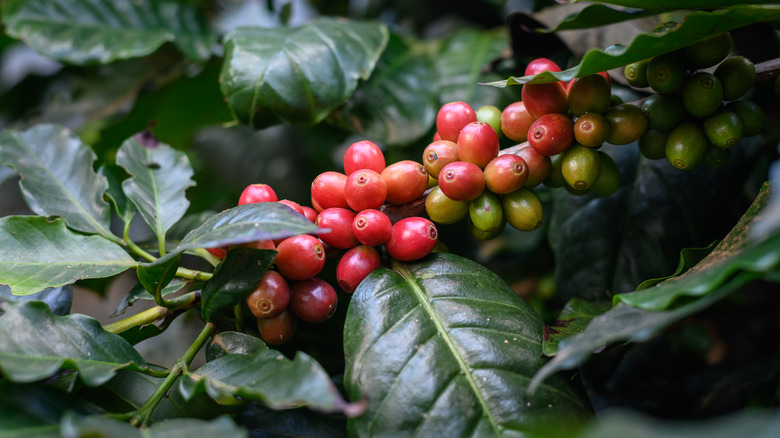Is It Possible To Grow Your Own Coffee For A Bold Cup Of Joe?
You can make the best steak in the world without raising a single cow, and you'll rarely find a lover of beef who will question that wisdom. This is not the case with other gastronomical fixations, so from time to time, someone will try making beer, and occasionally, coffee aficionados will decide to take the plunge and grow, roast, grind, and brew their own coffee. There's something about the rewarding and often very manual process of preparing a good cup of coffee that makes us think to do even more of the work ourselves. The good news is that it's possible to raise a coffee plant and end up with a cup of 100% handmade coffee in your hand, but the process might not be what you have in mind.
Of course, if everything turned out as you expected, this would be a terrifically boring world. Instead, what we get are shifts in perspective, and if you set out on the path to growing a cup of coffee for yourself, you'll probably end up with a hobby that looks more like gardening than craft beverage-making. Not only is this okay, but it's actually a huge win. You can, after all, buy extraordinarily good coffee just about everywhere in the U.S. What you can't get is the experience of raising coffee varietals far outside their native range and occasionally even producing a bean or two.
The journey of a cup of coffee begins with...
How long does it take to make a cup of coffee? You can expect to wait three to five years for a mature harvest of coffee beans. From this long timeline, you might conclude that coffee doesn't enjoy the productivity benefits of its own caffeine, but this sort of delay isn't unusual for perennial fruiting plants. The process looks something like this: You might find seedlings, but odds are you'll be raising your Arabica coffee plant from freshly picked green coffee seeds or coffee cherries (the full fruit, which will require extracting the bean).
Life with a coffee plant is slow and prone to failure. Thompson Owen of Sweet Maria's Home Coffee Roasting warns that, in 50 or so attempts, he grew one plant successfully, largely owing to the habit seeds have of rotting in the soil. His plants never produce much — at most, a pound or two of coffee per year after roasting. So, how do you maximize your odds and grow the healthiest plants possible? Start with nutrient-rich, deep, well-drained potting soil — not a sterile potting mix — with a pH as close to 6.0 as possible. The plant's taproot needs depth, so seed trays simply aren't suitable. Strip off the outer seed skin and plant the beans 1.5 inches deep. Then begins the waiting. After three to four months, you might still only have a seedling with its lily pad-like seed leaves.
Turning coffee plants into a cup of coffee
Now's the time to get the growing environment right. Coffee plants like stability: no big fluctuations in humidity or temperature, and nothing close to freezing temperatures. Diffuse sunlight is ideal, so taking advantage of growing in a greenhouse is a good bet in most of the U.S., where coffee is only hardy in USDA zones 10B-11 without winter protection. Keep the soil slightly moist, and keep a tray of water nearby to increase humidity.
After three to four years, you'll have a flowering coffee plant and then coffee cherries — which could then take several months to a year to ripen to a bright red. Don't "strip-pick" the cherries all at once; instead, select and pick the ripe ones, leaving the others to mature. Dry the cherries in the sun for two to three weeks, then hull them using whatever inventiveness you can muster; pulsing in a blender with blunted blades seems to do a great job. The least gear-intensive way to roast coffee beans is with a cast iron pan on your stovetop. It's a rustic process that goes well with the DIY ethos and maybe a new rustic DIY coffee station. Heat it to 300 to 350 degrees Fahrenheit, add the beans, and move them constantly to prevent scorching. After you've heard the beans popping in their "first crack" phase, but before their second crack phase starts, turn off the heat and cool the beans. Grind and prepare the coffee to your taste.


